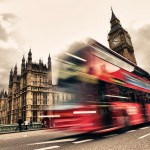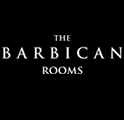We’ve all seen the postcards and London posts which depict the city backdrop and a bright red bus in the centre. We’re also all familiar with the iconic London underground symbol signifying the presence of different stations and have seen (in movies and in real life) the rows of black cabs lined up outside the top 5 star hotels in London.
All of these viewpoints are evidence of London’s public transport network, which connects the different districts within the city, and which serves both locals and tourists as they travel between London’s boroughs and areas with ease and cost efficiency.
In this blog, we’re sharing all you need to know to use the public transport network like a London local – from knowing when to travel to some of the unspoken rules that outline behavioural restrictions in and around the city.
What public transport is available in London?
Public transport is big business in London, largely owing to the fact that driving and particularly parking are incredibly expensive.
For those travelling to London for a mini break or an extended holiday, the main public transport options you need to be aware of include the London underground, the London overground, the different trainlines which connect the city to other parts of the UK, and the bus network.
The underground, overground, and bus network are all operated by Transport for London, while the different trainlines are independently managed by different companies. While the buses are super popular with those jumping between fairly local destinations, as well as those who want to combine travel with an opportunity to see more of London, one consideration you need to take into account is the impact of road traffic on your journey.
The underground is not affected by traffic, and while there are regular delays and hold ups on different lines for different reasons, these are largely fixed efficiently and without too much impact on travel.
Weird and wonderful ways to get around the city
While we have already introduced the main and most popular means of travel throughout the city, some tourists may have heard about – and wish to try – the Emirates air line cable car. Known to be the only urban cable car service in the UK, this transport option connects the Greenwich Peninsula (where the O2, once known as the millennium dome sits) to the Royal Docks.
While this could hardly be described as a convenient or efficient way of travelling, and it certainly won’t get you any closer to your room at the Montcalm Hotel London City, it does break the monotony of travelling by train or getting stuck in traffic. Plus, it presents gorgeous views across the east side of London and is a memorable experience worth adding to your itinerary.
A few other lesser known but equally experiential means of travelling throughout the city include the Uber Boat service, hiring bikes from the many stands erected throughout the city as part of a drive to make London healthier and greener, and of course the many different cabs and taxis which range from iconic (but expensive) black cabs to more cost effective Ubers.
What’s the easiest way to get into the city?
If you’re arriving in the city by train then you will be pleased to hear that the main stations in the city are in fact a stone’s throw from popular tourist hotspots, as well as the best hotels near The Brewery London and other city staples for short term and longer stay visitors.
Arrival by air means that you will likely land in one of London’s 6 main airports. These include Heathrow and Gatwick as two of the biggest and most iconic in terms of international connections, as well as the smaller but more luxurious London City airport, the further afield Luton airport, Stansted airport, and Southend airport out in Essex. Once you’ve been through the arrivals gate, you can continue on into central London via a series of public connections including train, the Gatwick express, coach, or even the underground if you happen to arrive at Heathrow airport.
Alternatively, visitors can easily hire a car from the airport to facilitate onward travel and their London adventures – though this is far more costly and can be difficult to manage with the severe lack of affordable parking in and around London.
Tips for using public transport effectively
One of our first tips is all about underground etiquette in particular: if you’re standing on an escalator then stand on the right and allow those who want to walk up or down to pass by your left. An unspoken rule which you can see in action throughout any London underground station, this helps to ensure that movement throughout the station is seamless and consistent – plus, it will stop you from being tutted at by British locals and commuters.
Another piece of advice worth sharing is the value of tapping in and out, either with an oyster card or a contactless debit card. While the latter is super convenient for people who carry their bank card or have it loaded onto their phone, an oyster card has the added benefit of being able to cap your spend – not to mention it can be used on the underground as well as the London overground and bus network. This means that if you’re staying in one of the discount hotels in London’s central borough, you can access attractions across the city via bus or tube without stopping to buy individual tickets.
Our final piece of advice is to get to know London by its main transport hubs and connections, with the help of apps like CityMapper. This app lets you channel your location and destination into the app and will help you to identify the quickest route to get there – with live updates about delays and closures as well as other challenges you may come across.
We hope that this advice helps you to navigate London like a local!


























